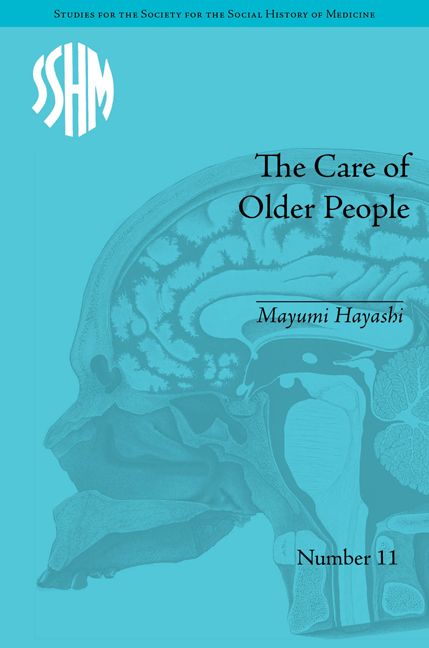6 - Residential Life in Gifu
Summary
Like Chapter 5, this chapter is divided into two sections. The first covers the period 1947–73, examining the Yorokaen institution and its replacement home in Ogaki City, Gifu Prefecture (successors of Ogaki Old People's Almshouse), and drawing on records held on site and at Gifu Record Office. The second section provides institutional histories of Yorokaen (both the 1963 replacement and its 1994 reconstruction) after 1970, and the city's first nursing home, Kusu-nokien, opened in 1987, mainly using interview material.
The Tenacity of the Almshouse Regime
Yorokaen Old People's Institution, 1947-63
Yorokaen originated in 1926 as Ogaki Old People's Almshouse and retained its official assessed institution status and title (literally, ‘flower garden for the elderly’) throughout the period examined. However, its location and physical appearance altered in 1963 when the modest 1947-built building on the former almshouse site was replaced by a purpose-built larger facility on the outskirts of the city. Similarly, Yorokaen's management changed in 1959, from the nonprofit Ogaki City Relief Foundation, officially recognized as a social welfare corporation (technically, a quango acting as a subcontractor of public residential care), to Ogaki City Council. Equally, Yorokaen's official definitions and aims changed, along with its institutional ethos, regulations and practices, ostensibly to match these. Thus Yorokaen operated as a ‘publicly sanctioned general public assistance institution’ under the 1946 (Old) National Assistance Act, then as an old people's institution under the 1950 (New) National Assistance Act and finally as an old people's home under the 1963 Elderly Welfare Act. All this has affected the lives of the residents and staff. Whether it has resulted in a ‘homely’ environment is questionable.
- Type
- Chapter
- Information
- The Care of Older PeopleEngland and Japan - A Comparative Study, pp. 151 - 178Publisher: Pickering & ChattoFirst published in: 2014



